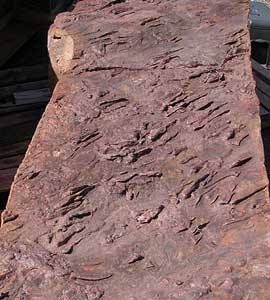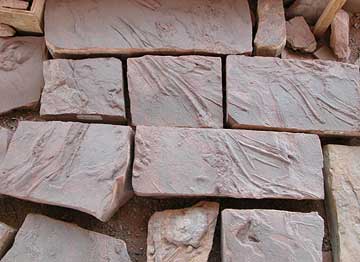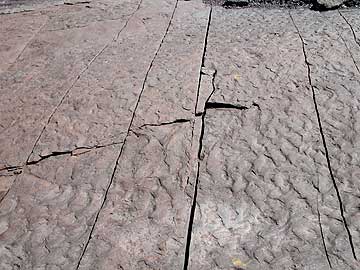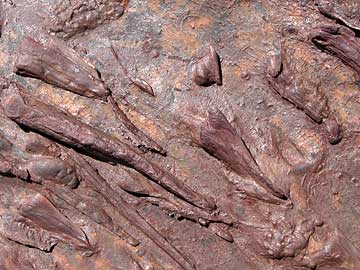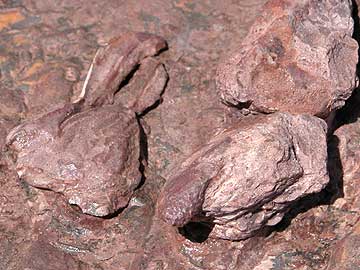Dinosaur Facts | Fossil Formation | Geologic Time | Glossary
Swimming Tracks
Swimming tracks are one of the unique fossil records preserved at the Johnson farm in St. George, Utah. According to Dr. Martin Lockly, the Johnson farm is the second site in the world in which tracks such as these have been found. Swimming tracks are formed by swimming animals when part of their anatomy leaves scrapes and marks in the mud. In the case of the Johnson farm dinosaurs, the swimming tracks take the form of long scrape marks left by the feet and claws of the dinosaurs. The following picture shows the first series of blocks uncovered showing swimming tracks.In April 2004 I was taken to a closed off area at the Johnson farm and was shown one of their newly uncovered blocks showing swimming tracks. These are probably the best that have ever been uncovered. The blocks show distinct claw marks that were made in the soft mud.
It was educational to see the before and after in the process of uncovering the tracks. The tracks were formed in mud that was overlaid by sand. The sand hardened and turned into sandstone. The following picture shows the sandstone layer in which the dirt and rubble has been cleaned off on top. It appears that the sandstone has been cut into neat slices, but the fractures are natural. When the sandstone blocks are turned over, a layer of mudstone coats the surface. The second picture shows what the underside looks like after it has been uncovered. The picture shows claw marks through the mud. The final pictures are close ups of several of the tracks.
